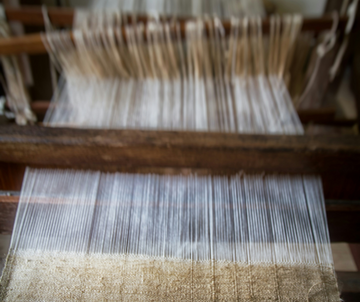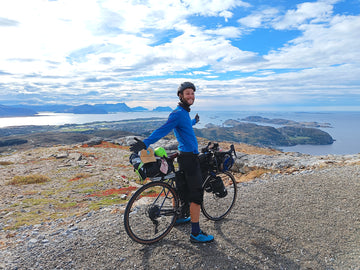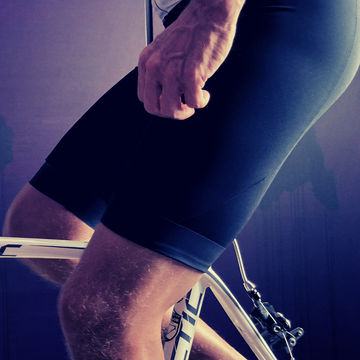Why choose a warp and weft fabric for your cycling clothing?
When it comes to cycling clothing, every detail counts. From comfort to performance, fabric choice plays a vital role. At earth•beat, we've chosen to use a four-way stretch warp and weft fabric for our jerseys and bib shorts. But how does this fabric differ from traditional knitwear? And why is this choice part of our commitment to more sustainable clothing?
What is a warp and weft fabric?
A warp and weft fabric is made up of threads intertwined perpendicularly: the warp threads (longitudinal) and the weft threads (transverse). This structure gives the fabric great mechanical strength and, when designed with stretch fibers, elasticity in several directions. Historically used for clothing requiring increased robustness (e.g., pants), it is now adopted in technical clothing for its high performance.
What is a mesh?
Unlike woven fabric, a knit is made by interlacing loops of yarn (knitting), forming a more flexible and naturally stretchy structure. Knit fabrics, such as jersey, are commonly used for sportswear, but their elasticity is often limited to one direction, which can restrict freedom of movement and the stability of the garment.
To explore the difference and understand what a warp and weft fabric is, we recommend this article from Marques de France
optimal elasticity and compression
Unlike a knit, the warp and weft fabric offers exceptional elasticity in four directions: horizontally, vertically and diagonally. This multidirectional elasticity allows the garments to adapt perfectly to the cyclist's movements without losing their shape over time. This guarantees total freedom of movement and increased comfort, even during intense efforts. In comparison, a classic knit is generally only elastic in one direction, which limits the garment's flexibility and can lead to points of uneven tension or compression. The warp and weft fabric maintains a firm and uniform fit, providing appreciable muscle support during long rides while reducing fatigue.
increased lightness and breathability
The finer, lighter structure of the warp and weft fabric improves breathability. By allowing air to circulate better, it helps regulate body temperature even in very hot weather. Our fabrics are also between 25 and 50% lighter than traditional knitwear, offering an incomparable feeling of lightness, particularly appreciated during climbs or summer days.
enhanced durability
Choosing a warp and weft fabric also means opting for a more robust material. Abrasion resistance tests show a coefficient of 7 to 10 in favor of the fabrics we have chosen compared to a traditional knit. This tight structure provides better resistance to wear, thus extending the life of the garments. At earth•beat, this durability is fully in line with our philosophy: designing products that last a long time, to reduce their environmental impact.
an additional cost in the service of quality
Certainly, the production cost of a warp and weft fabric is higher than that of a traditional knit. But this choice is based on our conviction that the quality and longevity of clothing are essential. By offering increased performance and better resistance, these fabrics help limit the frequent replacement of equipment, thus being part of a more responsible consumption approach.
a committed approach for demanding cyclists
At earth•beat, we believe that performance and responsibility can go hand in hand. By choosing materials that offer the best compromise between technicality and durability, we aim to support every cyclist in their cycling while minimizing the impact of our products on the planet. And because quality clothing deserves to be preserved, we encourage everyone to take care of it and repair it if necessary, to further extend its lifespan.




